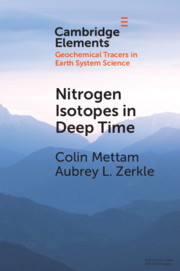Element contents
Nitrogen Isotopes in Deep Time
Published online by Cambridge University Press: 21 January 2021
Summary
- Type
- Element
- Information
- Online ISBN: 9781108847186Publisher: Cambridge University PressPrint publication: 18 February 2021
References
- 11
- Cited by



